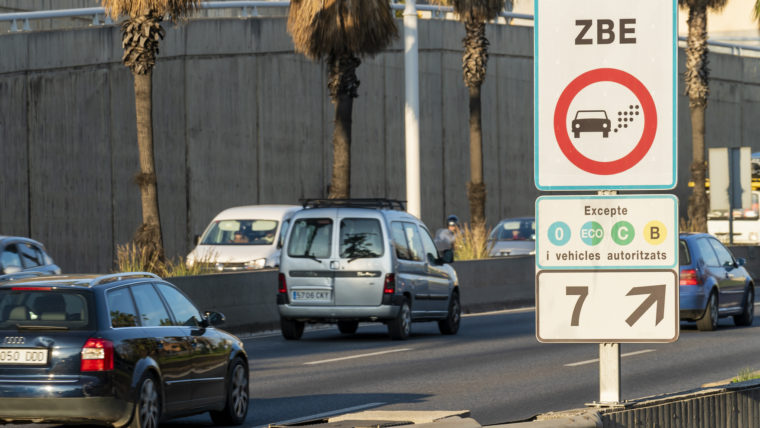Update to the LEZ with social improvements and easier occasional use of vehicles
The update to the municipal by-law for the Low Emission Zone adds measures to provide extra cover for those with the lowest incomes. The new version also broadens permission for the occasional use of vehicles for professionals close to retirement age who use their vehicles for work.

The following updates are being made to the by-law:
Authorisations for 24 hours
- Occasional access for vehicles without the environmental sticker, including historical and classic vehicles. Permission to circulate may be for 24 days per vehicle per year.
- Foreign vehicles which do not meet the technical requisites on emissions. These will also be entitled to 24 days as above.
Temporary authorisation
The update to the by-law also broadens temporary permission for vehicles without the environmental sticker to circulate in the LEZ:
- Vehicles belonging to professionals set to retire within five years.
- Vehicles being used for a unique activity with municipal authorisation. These are allowed to circulate for the duration of the activity.
- Vehicles carrying out maintenance tasks in workshops. These are authorised while the vehicle is in the workshop.
- Vehicles belonging to people receiving regular medical treatment. These are authorised for the duration of the treatment.
- Vehicles being replaced, if accreditation can be provided for the purchase of a vehicle which meets the established requisites. This would be for the interim, until the new vehicle is delivered.
- Unique vehicles from driving schools, vehicles carrying skips and containers, trucks with water cisterns, armoured security vehicles, cage trucks and dumpers. Authorisation will be annual in these cases.
Annual authorisation
Owners of pollutant vehicles can circulate within the LEZ if they demonstrate an annual income lower than twice the Public Income Indicator of Multiple Effects (IPREM), multiplied by the number of household members where this applies. For example, taking into account that the IPREM for 2022 is €579 a month, a person living alone would have to earn a maximum of €1,158 a month to qualify for the annual authorisation.
For a household of two people, the IPREM threshold will be multiplied by 2.5, compared to 2.9 for a household of three and 3.3 for a household of four or more.
Besides these new aspects, the text also maintains the restriction on the most pollutant vehicles without the DGT environmental sticker, from Monday to Friday between 7 am and 8 pm, plus these exemptions:
- Vehicles used to transport people with reduced mobility
- Emergency vehicles and essential vehicles
- Vehicles used to transport people with illnesses or disabilities which condition their use of public transport
- Foreign vehicles complying with the technical requisites on emissions
The control system for the LEZ will continue to use cameras, with the possibility of the City Police also conducting checks. Fines for a single infringement will be 200 euros, rising by 30% if this occurs during a pollution episode. Revenue raised from fines will be used to help promote sustainable mobility.
What does the by-law for the Low Emission Zone regulate?
The by-law sets out the framework for the regulation of Barcelona’s Low Emission Zone, an area of over 95 square kilometres which is delimited by the city’s ringroads and includes all or part of the municipalities of Barcelona, L’Hospitalet de Llobregat, Cornellà de Llobregat, Esplugues de Llobregat and Sant Adrià del Besòs
In keeping with a policy which is common across the European Union, the main goals of the LEZ are to improve air quality in the city, foster the use of more sustainable transport and comply with national and European regulations and the recommendations of the World Health Organization (WHO).
The update to the by-law was developed with organisations, citizens and other stakeholders through a participatory process to come up with a consensual text addressing everybody’s needs. It is due to be approved in the next Government Commission and later debated in the Commission for Urban Ecology and Mobility, before being submitted for public scrutiny and approved by the Full Council.
The project to implement the low emission zone is funded by the EU’s Next Generation funds.



